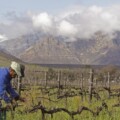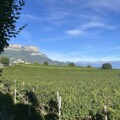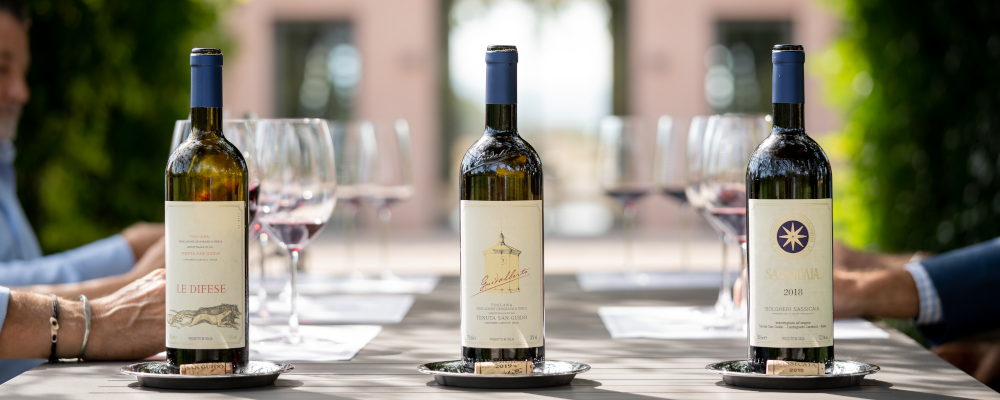At a recent lunch and tasting for the wine press she hosted in Toronto, Priscilla Incisa della Rochetta described her role in the family business as “external relations”. Incisa della Rochetta was on the second stop of a four-city Canadian tour, which also included events in Montreal, Calgary, and Vancouver to promote the wines from her family estate, Tenuta San Guido, in the Maremma sub-region of Tuscany that stretches east from the coast of the Tyrrhenian Sea.
Tenuta San Guido’s most famous wine is Sassicaia, one of the original Super Tuscan wines made with French grapes, that came to prominence in the 1970s.Sassicaia is made from mostly Cabernet Sauvignon (usually 85 percent or so) and Cabernet Franc grapes. The vines for Sassicaia were planted in 1942 by Priscilla’s grandfather, Mario Incisa della Rochetta, sourced from another Tuscan estate owned by a friend.
The vines and the wine they made from them were not intended as a commercial venture. They were planted as an act of self-sufficiency and comprised just one of many components of the 500-hectare agricultural property, along with fields of wheat, olive groves, and stables to raise thoroughbred horses. The idea of selling the wines from Sassicaia came in the 1960s when some other family friends and relations—the renowned Antinoris who were beginning to develop the neighbouring Tentuta Guide al Tasso—suggested it.
The first Sassicaia to go on sale was the 1968 vintage, which was released for public consumption in 1971. Tenuta San Guido continues to release Sassicaia no sooner than three years after harvest: it’s elevated in French oak barrels (about two-thirds new) for two years, and then left to rest and pull itself together for another one. Last year the Incisa della Rochetta’s released their 50th vintage, the 2018, and this year it’s the 2019 that is due to be available in Canada this October.
Sassicaia was formerly labeled simply as table wine until the appellation of Bolgheri DOC was extended to red wines in 1994.In fact, it was awarded its own “monopole”, Bolgheri Sassicaia DOC. By then the Super Tuscans of Bolgheri, which included Ornellaia (established in 1981 by another branch of the Antinori family), made with Cabernet and Merlot grapes were in high demand, where they have stayed. This year, a bottle of the 2019 Sassicaia will cost more than $250 from the LCBO, if one was lucky enough to gain the privilege of being able to buy it.
Since Sassicaia sells out all the wines it makes, save those bottles they keep for their library, it begs the question of why Priscilla Incisa della Rochetta must manage external relations at all. Most export managers buy airplane tickets for the singular purpose of selling more wine. There is no more Sassicaia to sell, and the other wines Tenuta San Guido makes, Guidalberto (a blend of Cabernet Sauvignon and Merlot) and La Difese (a blend of Cabernet Sauvignon and Sangiovese) do just as well.
One of the reasons that Priscilla Incisa della Rochetta was in Canada, pouring wines and answering questions, is that Sassicaia is sold from the winery by allotment.The system whereby wines that are in high demand are distributed across many markets so that one or a small group of markets do not dominate sales.
Allotment protects the winery from shocks to the supply chain, which Incisa della Rochetta agreed was a lesson pertinent to the current marketplace, what with wars and lockdowns. She also agreed when I suggested that by spreading Sassicaia across the world and in front of wine enthusiasts, Tenuta San Guido was investing in the long-term value of the label. I suspect, too, that the family and winery are proud of the wine and would like as many people to try it as they can manage.
Stephen Marentette, the Ontario Sales and Marketing Director for Tenuta San Guido’s importer, Sylvestre Wines & Spirits Inc., was at the table. He explained that this year the Liquor Control Board of Ontario, which sells its allotment to consumers in the province, had devised a kind of lottery that prospective buyers can subscribe to online in hopes of being able to purchase Sassicaia. He was unsure how many bottles a single buyer might be able to take home. Licensee buyers (restaurants) could purchase directly through the importing agency, but would be subject to its own allotment regime.
The wines presented that day went in escalating order of prestige, beginning with the latest release of each label. We began with the 2020 Le Difese, which Incisa della Rochetta said was, “meant to be drunk young”. First made in 2002, it’s a blend of Cabernet Sauvignon from Bolgheri and Sangiovese from Chianti Ruffino, so is labeled simply as Toscana IGT (“wine of Tuscany”).It should be in Canada next spring for about $40 a bottle. It showed a juicy play between blackberry and cherry with lively acidity.
Next, we moved on to two vintages of the Guidalberto blend of 50 percent Cabernet Sauvignon and 50 percent Merlot. First, the 2020, which will come to Canada around March of next year and retail for about $60 a bottle. Incisa della Rochetta does not like Guidalberto to be described as a “second wine”, but rather “another wine”. Another beautifully balanced wine, but now with black and blue fruit lifted with a bit of Mediterranean herbal spice. Next, the 2015, whose fruit was what the British call hedgerow (raspberry and blackberry), with black currant on the finish, still very much lively and brought water to the mouth.
For the stars of the show, we tasted three vintages of Sassicaia: 2018 now in release, 2019 released last year, and 2010 to see what happens to the wine with a bit of age. I’ll cut to the chase and describe what we tasted in reverse order. The twelve-year-old Sassicaia was a kind of Platonic ideal of Old World Cabernet, very much on the order of big growth Bordeaux. Cassis and maybe a bit of cranberry on the very, very long finish. It was hauntingly good and purred like a finely tuned performance car.
The 2018 Sassicaia, was from what is considered a cooler vintage and showed a brighter, more lively style of fruit with more blackberry than currant, and maybe black cherry. Incisa della Rochetta said that she liked the wine for its lighter touch, saying it showed a “style we like to display”. Again, in lovely balance with food-friendly acid, it was still showing young with grippy tannins and promise of what is to come.
By contrast, the 2019 Sassicaia, which we had at lunch actually started with, showed more dark red, crimson fruit, and tannins that stuck a bit. But for a wine that wants age, it was still so beautifully balanced and immersive. Some wines spur conversation, others stop it. Cabernet was planted at the Sassicaia vineyard because it reminded Mario Incisa della Rochetta of Bordeaux, with its sandy and gravelly maritime soils. He wasn’t wrong; the expression of the grape is elegant yet strong. Nice wine if you can get it.
Correction: The author regrets that a previous version of this post included erroneous pricing, quoting $1,100 for a double magnum (3L) bottle of Sassicaia 2018.
Recommended for You

There’s more to South African wines than meets the eye

Malcolm Jolley: Zeal of the convert: How South Africa’s signature wine won me over

Malcolm Jolley: No bad wines: Alto Adige region combines the best of Italy and Germany

Malcolm Jolley: Why critics have stopped whining about bad wine




